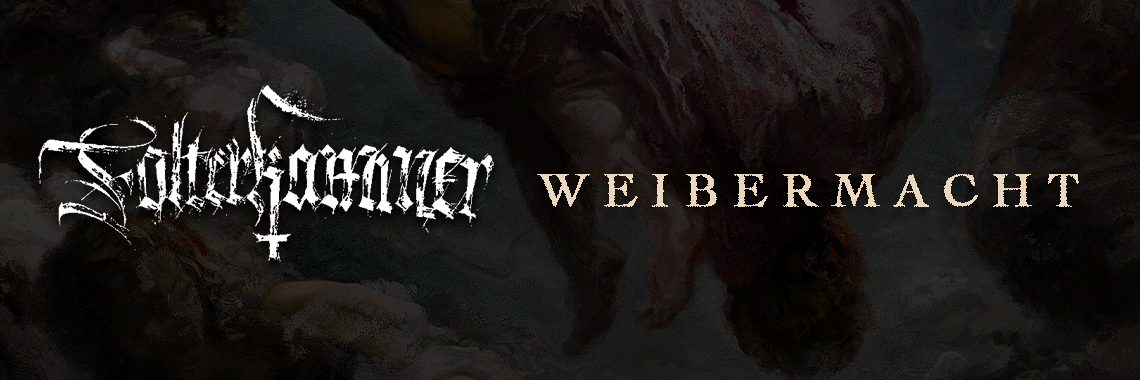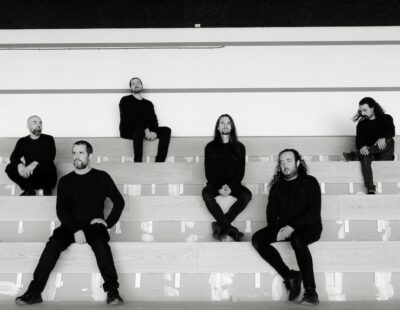
In the previous decade, which now belongs to the cosmos, black metal itself expanded further and further out to the cosmos. Dozens of acts proliferated across the international scene with lyrics dedicated to the planets, the stars and our (insignificant) place in this wondrous and terrifying universe. To be frank, some of it can be pretty boring and overblown. However, there are some very bright stars in that sky. One of the very best weavers of cosmic emanations is Jacob Buczarski, best known as the one-man show behind Mare Cognitum.
On albums like Phobos Monolith (of the best black metal albums of the last decade, easily) and Lumiferous Aether, Jacob crafts brilliant instrumentation into memorable and emotionally gripping compositions. The vocals are pretty nasty as well. It’s music that looks outward, but has so much power to resonate with our inner lives. There’s power, melody, drama and serenity all blended into an exciting sonic journey. In a modern sense, you could call it true black metal art.
He started the project back in 2011, “when I was 21 years old. Oof, long time ago. I was young, but I had already put a lot of time and effort into several music projects and had a great experiences working with talented people.” He had realized his need to take artistic matters into his own hands: “I needed to prove to myself that I could create something that I enjoyed and felt proud of, that was a real reflection of myself that wouldn’t just fade away.” The joy of creating music on its own soon gripped him, as he “just kept doing it, and soon enough putting out music became a constant element in my life, something extremely grounding that I couldn’t seem to stop doing. And now, years later, I still can’t!”
And so in 2020, Jacob is back again with his comrade Ayloss from the great Spectral Lore with a new split album Wanderers: Astrology of the Nine, out on March 13. Inspired by Gustav Holst’s classic series, The Planets, the split represents a “thematic journey through our solar system.”
I had a nice chat with Jacob about the split and Mare Cognitum in general. Check it out, and listen to a couple new tracks from the split below:
To put it simply, sir. Why space? Why the cosmos? What draws you to use that as your artistic muse?
When I first started writing songs, I tried to do the typical black metal approach of writing some grim sounding lyrics to go with grim sounding music. I tried to force myself into that cult black metal mold and it felt miserably restrictive to force myself into that. As much as I enjoy that style and aesthetic I couldn’t really communicate anything through it, it was just copycatting. I tried to be more honest with myself, and through that I grew inspired by an admiration for the cosmos that had been with me since childhood. And as it turns out, that harsh, cold, and uncaring nature of the cosmos contrasts well with its immense beauty, grandeur, and mystery atop a musical canvas as large as black metal — a canvas that grows larger when you realize it isn’t necessary to adhere to every single tradition of the genre. So much can be communicated through this medium.
On this new split with Spectral Lore, you explore each of the planets in a way akin to Gustav Holst’s famous and magisterial series of compositions. What do you think you’ve added to this legacy? I noticed you kept some names (“The Mystic”) while changed some others.
Well for one, I think we’ve made something that Holst would really hate! Ha…
But really, Holst’s idea was just our starting point for a very tried-and-true idea: Spectral Lore and I have merely once again romanticized nature, an already common topic in black metal, and just turned the gaze upwards slightly to our cosmic neighbors. We are certainly in debt to the original idea of Holst’s Planets suite, but we hoped that Wanderers would be viewed as a distinct entity of our own rather than just a spin on Holst’s idea. So, we used Holst’s suite as only the most basic guideline of our approach to this undertaking. And while we respected and referenced the areas we found most inspiring of Holst’s work — using particular names and characterizations of planets, for instance – we definitely did our best to mold our own interpretation of the concept that could stand on its own without necessarily requiring any knowledge of Holst at all.

Out of curiosity, what would you say is your favorite of the original Holst masterpieces? (It’s tough to choose between Mars, Jupiter and Neptune myself).
I’m very partial to Jupiter and Neptune myself as well! Jupiter from a purely musical standpoint, because of it’s extremely catchy hook-like motifs which lie within a very complex and constantly changing song structure, no easy feat to create ear-worms in that context. And Neptune because of it’s truly — for lack of a better word — mystic qualities, the way that it does really conjure images of encountering some shuffling hermit, whose presence makes you nervous and uneasy, as if his being has become warped and enchanted from years in solitude honing some mysterious craft.* I love the way this piece elicits real, vivid, fantastical images and tells a story, even without words. Out of the bunch I think this arrangement really inspired my own reflection of it the most.
Although your purpose is to create odes to the beauty of these heavenly bodies as entities that are “out there.” Do you think there are archetypes resulting from your expressions that have something to teach us “down here?”
It’s funny you ask this question this way because I realized I’ve been self-describing my most recent work as the most “down to earth” of anything I have done. My themes, while always layered in esotericism, have always been representative, either literally or figuratively, of my very real views of the world, humanity’s place in it, and the substance of our lives. So while I like leaving room for a listener’s personal interpretation, the core is definitely personal to me. Thinking about my most recent compositions, inspiration ranges from reflections on the odd effects that the very act of creating this music has had on my life, to my fear of our impending doom through climate destruction. So it’s personal thoughts illustrated through sometimes much, much grander imagery. And as I’ve said before, the cosmic elements are always intended to act as a reminder of our relative smallness and unimportance in the scheme of reality, in order to encourage introspection and reflection on what it is that is truly significant to us as sentient beings.
Finally, tell us a bit about the artwork. Who designed the cover and what is it telling us?
The great Elijah Tamu of Ikonostasis Art created this piece for us. We worked closely with him on it, and there is much symbolism he brilliantly embedded into it. Central to the piece is the mandalic glyph at the top, representing the Sun. It emerges from a great chalice containing a mountain, the peak of the firmament from which the rest of the system’s energy comes. The chalice sits atop a turtle’s shell, a reference to the World-Bearing Turtle of ancient myths which supports the world on its back. From the Sun, rays extend towards the smaller chalices raised by the planets to humbly receive energy from it. Entwined around the large chalice are the figures of two snakes, extending upwards and dissolving into a wing-like formation that continues to contort into eye-like shapes, as on the surface of Jupiter. Alchemically, this represents the paradox of harmony and strife in our cosmos, in that it is through the deconstruction of elements that construction of new formations begins — solve et coagula. Below rests the cosmic sea, with the human forms entwined in it, restlessly emerging from the waves, grasping to find their place in it – an illustration of our human struggle within this peculiar existence.
(* PS- Interesting that he interprets it this way. I was introduced to The Planets in my modern western history course in college. Our professor showed how each planetary movement could be used to express the devastation (“Mars”), calm (“Venus”) and anxiety surrounding the aftermath of the First World War. His interpretation of “The Mystic” was centered on the mystic’s message to humanity about the return of mystical, magical and esoteric thought out of the void of humanity’s hubris around reason, etc. That was in 2006. In our newly frightened and increasingly superstitious age, “The Mystic” seems more relevant than ever.)







